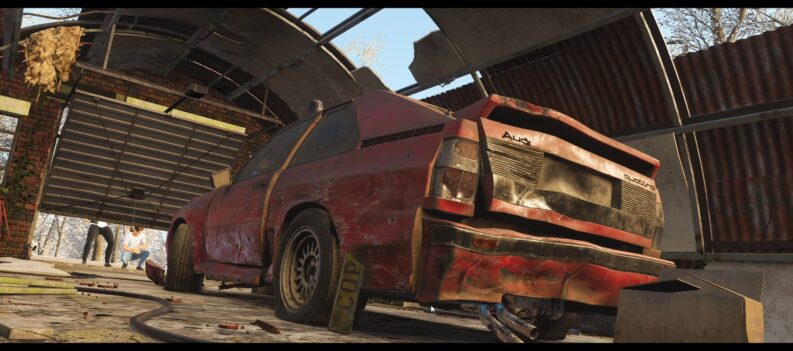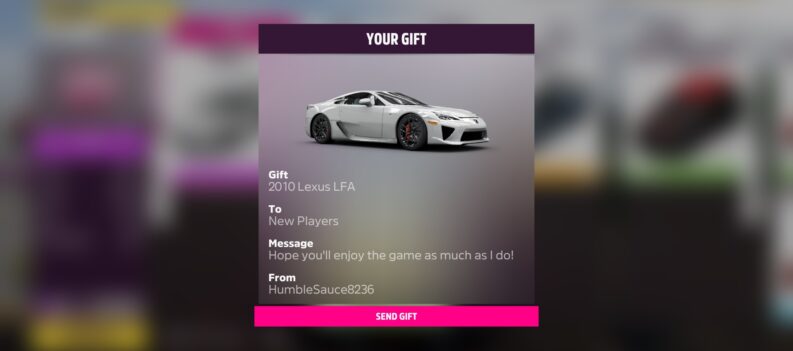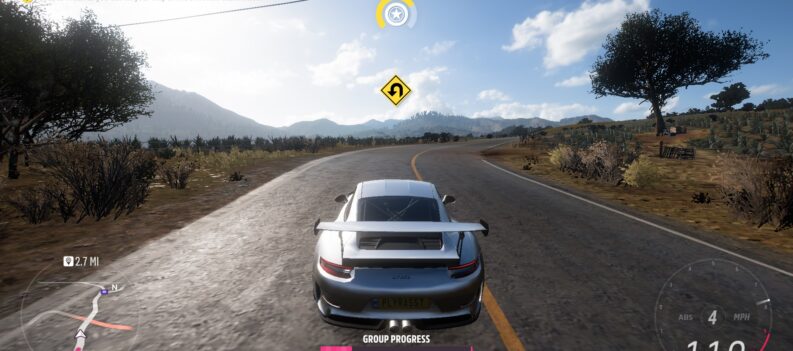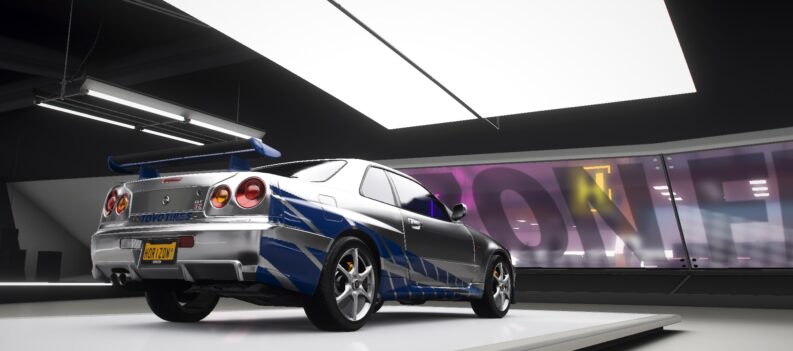A few years ago, a legendary JDM car model was revived in the form of the Toyota A90 Supra. A revival trend is brewing between global car manufacturers. Almost every major car manufacturer has released a modern-day rendition of their cult-classic cars in the recent decade. We have already seen the likes of the legendary Toyota AE86 revived in the Toyota 86, and now we have the Supra.

The “new” A90 Supra was met with a lot of criticism and raised eyebrows. Automotive purists did not want anybody tainting the status and legacy of the cult-classic sports cars of the 90s, not even the manufacturers themselves. Despite this, the higher-ups at Toyota gave the green light to revive the Supra name in partnership with German car manufacturer BMW.
If you have ever wondered which of the two Supras in Forza Horizon 5 sounds better, runs faster, and handles better, then wonder no more as both cars are featured in Playground Games’ newest addition to the Forza Horizon franchise: Forza Horizon 5.
Today we pit the modern-day Toyota Supra A90 versus the classic and sought after Toyota Supra A80 of the 90s.
Toyota Supra A80

Contrary to popular belief, the A80 Supra is the least popular Supra model in its time. Sure, these days, any car fan with a wad of cash and a chance to buy a Supra will jump on the bandwagon as fast as they can. However, during the time of release and the few years that the A80 Supra was in production, the model sold significantly fewer units compared to its even older siblings with the same name.
The A90 Supra was powered by one of, if not the most popular engine in the world – The Legendary 2JZ-GTE inline-six engine. The Supra came in either a non-turbocharged 2JZ-GE or the twin-turbo 2JZ-GTE, which was arguably the more desirable engine.
With the 2JZ-GTE under the hood, the Supra produced a healthy 276-horsepower for the Japanese Market, 321-horsepower for the US Market, and 326-horsepower for the European Market.
The A80 Supra is most known for the bullet-proof 2JZ-GTE engine, which could handle power upgrades up to 1000-horsepower without any major modifications to the engine block. This made the Supra a very enticing choice for drag racing.
However, the Supra wasn’t just all about power. Car reviews and publications back in the day posted astonishing skid-pad numbers for the A80 Supra a testament to its handling chops. The A80 Supra also established itself as the car with the shortest braking distance back in 1997. The record would only be broken a few years later by another legendary car in the Porsche Carrera GT.
Toyota Supra A90

The Toyota Supra TA90 is the spiritual successor to the legendary A80 Supra. The “new” Supra follows the same basic ingredients for speed: An inline-six engine with turbos + rear-wheel drive.
The Supra A90 is a joint development venture by BMW and Toyota. Most enthusiasts scoffed at the fact that Toyota chose not to develop their powerplant for the successor to their legendary model, opting for a Toyota-tuned off-the-shelf N55 inline-six engine from BMW instead. To add insult to injury, the new Supra chassis is based on a BMW-made platform in the BMW Z4.
The purist car community expressed mixed feelings about the new A90 Supra and wonders why Toyota allowed BMW to taint so much of the historical significance of the Supra name. They felt like the Supra name was used as a cash grab.
However, the new Supra did not disappoint performance-wise. Toyota claims that the BMW-Supplied B58B30 engine produced 340-horsepower. After a few dyno-runs done by the car community, they quickly found out that the actual power output was at a very respectable 340-387 horsepower.
Since the A90 Supra has only been out in the market for a few years, we are going to have to give it a few more years before aftermarket parts manufacturers complete their R&D on performance parts for the new Supra.
Jackie Ding of PhD Racing Lab can be seen year-round racing and developing an A90 Supra throughout various time-attack competitions around the United States. PhD Racing’s TA90 Supra bagged multiple podiums and wins in the Global Time Attack events which shows just how capable the new Supra platform can be with the right mods.
Toyota Supra A80 versus A90 in Forza Horizon 5
Forza Horizon 5 will not miss a chance to appease JDM fans everywhere. A ton of people know and love the Supra name after all.
Today we will try to compare both cars in the following categories:
- Sound
- Handling/Performance
- Top Speed
- Design/Looks
Sound

Both the A80 and A90 Supras feature an inline-six engine with about the same displacement at three liters. Because of the similarity in their engine configuration, it is expected that both cars will more or less sound the same. The biggest contributor to the differences in sound will come down to the type of exhausts used and their configuration.
The audible differences in exhaust note between the A80 and A90 Supra are as follows:
First, the A80 Supra’s exhaust note sounds raspier than the A90’s exhaust note in-game. The sound signature is more in-your-face and angry. The exhaust note almost sounds like the A80 has a titanium exhaust.

Meanwhile, the A90 sounds deeper and smoother and the lower and higher frequencies in the exhaust note sound more balanced with one another.
Overall, the best way to describe both Supra’s exhaust noise is A80 = More Trebble + Raspy. A90 = Bassy + Smooth.
Handling/Performance

Both the A80 Supra and A90 Supra feature a rear-wheel-drive platform. The A80 has a six-speed manual transmission. The A90 Supra has an 8-speed Dual-clutch transmission.
The A80 Supra has 320-horsepower, while the A90 has 335-horsepower.
The A80 Supra feels more boaty or loose in turns. The rear-end tends to kick out in the left-right transition.

The A90 Supra feels more planted compared to the A80. It is more behaved and more predictable in turns.
Equipped with a quick-shifting 8-speed ZF Dual-clutch transmission, the A90 Supra is going to be able to shift faster than the 6-speed manual on the A80 Supra.
Top Speed

Both cars have very similar power output. The Toyota Supra A80 has 320-horsepower and weighs 3,329-lbs in stock trim. Meanwhile, the Toyota Supra A90 has fifteen more horsepower at 335-horsepower but weighs a bit more than the A80 Supra at 3,397-lbs.

With power-weight ratios in mind, both cars are pretty similar. The A80 weighs less and has less power than the A90. The A90 has a tad more power but weighs quite a bit more than the A80 Supra.
As expected, Top Speed runs for both Supras returned 165MPH in back-to-back runs.
Design/Looks

Looks will always be subjective. As they say, beauty is in the eye of the beholder.
However, members of the car enthusiast community will agree that the A80 Supra looks so much better than the A90 Supra.

The A90, though very striking, looks very confused and odd with the overly large fender flares and tall greenhouse.
Meanwhile, the A80 Supra still looks great, even in 2021. The overall design is more subdued with its smooth sweeping design that’s a key characteristic of 90’s sports cars.
Despite this, car lovers might prefer the looks of the A90 versus the A80 and vice-versa.
Supra Surprize

It does not matter whether you love or hate the new Supra. In the end, all of the ingredients that made the A80 Supra such a desirable car are still present in the new car. The inline-six engine, a rear-wheel-drive platform that the Supra namesake has carried for so long still lives on in the A90 Supra.
The A80 Supra is an undeniable classic 90s JDM car. Its popularity might never be surpassed by any spiritual successor from Toyota, ever. The A80 will go on to become one of the most legendary sports cars in history, along with other 90s and early 2000s sports cars from Japan.
Japan’s golden days of sports car making are over. However, the cult classic cars that they produced back in the day will continue to live on in popular media, car enthusiast circles, and video games such as Forza Horizon 5, where these cars will be immortalized as timeless classics.
















